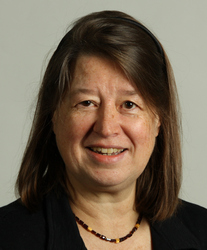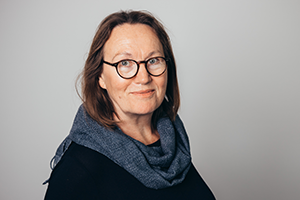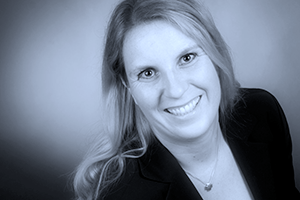Editor: 杨赟悦 Time: 2019-09-09 Number of visits :291
Compact Courses supported by Erasmus+ Program:
Held in in School of Marxism, ZJU
Taught by Professors from Siegen University
9.15 | Migration and collective identities in Europe: Part 1 | Raphaela Averkorn Sigrid Baringhorst |
9.20 | Religion in Socialism using the example of East Germany: Part 1 | Stefanie Siedek-Strunk |
9.21 | Migration and collective identities in Europe: Part 2 | Raphaela Averkorn Sigrid Baringhorst |
9.22 | Religion in Socialism using the example of East Germany:Part 2 | Stefanie Siedek-Strunk |
Detailed Introduction and Arrangement of two courses:
Attachment 1: Migration and collective identities in Europe
Attachment 2:Religion in Socialism using the example of East Germany (1945–1961)
Attachment 1:
Compact Courses supported by Erasmus+ Program held in School of Marxism: Course I:
Migration and collective identities in Europe
Abstract、Syllabus and Timetable
Prof. Dr. Raphaela Averkorn (Department of History, University of Siegen)
Prof. Dr. Sigrid Baringhorst (Department of Social Sciences, University of Siegen)


Abstract
In this interdisciplinary course the topics of migration and collective identities in Europe from the 5th century until today will be discussed. The transcultural history of Europe shows that it was formed by a great number of different cultures and religions. Europe is a continent of immigration and emigration since ever. Collective identities were shaped and reshaped during the centuries. This course will concentrate on different case studies taken from different centuries and different European countries. Different types of migration like e.g. forced migration, religious migration, labour migration, return migration will be discussed. The economic, political and socio-cultural contexts will be analysed, too. Various sessions will be dedicated to the actual situation of Europe which faces a huge migration crisis since 2015. Problems, challenges, different policies and future perspectives will be presented.
Syllabus: Migration and collective identities in Europe
No. | Session | Topics | Material |
1 | Theoretical concepts of collective identities and citizenship |
| Basic texts Maps Sources |
2 | Transnational migration in pre-modern Europe |
| Basic texts Maps Sources |
3 | Religious immigrant minorities and state responses in the Early Modern Europe: Protestants vs. Catholics |
| Basic texts Maps Sources |
4 | Religious immigrant minorities and state responses (20th and 21t century) in Europe: Islam |
| Basic texts Maps Sources |
5 | Different types of migration in Europe: 19th century and early 20th century |
| Basic texts Maps Sources |
6 | Different types of migration in Europe: 20th and 21st centuries |
| Basic texts Maps Sources |
7 | Anti-immigrant movements and parties in the United Kingdom and Germany |
| Basic texts Maps Sources |
8 | Europe and migration since 2015 |
| Basic texts Maps |
Time Table:
Course „Migration and collective identities“, Part I
Sunday, 15th September 2019
10.00 - 11.30 Unit 1: Theoretical concepts of collective identities and citizenship
11.30 - 13.00 Unit 2: Transnational migration in pre-modern Europe
Lunch Break
14.30 -16.00 Unit 3: Religious immigrant minorities and state responses in the Early Modern Europe: Protestants vs. Catholics
Tea Break
16.30 – 18.00 Unit 4: Religious immigrant minorities and state responses (20th and 21t century) in Europe: Islam
Course „Migration and collective identities“, Part II
Saturday, 21st September 2019
10.00 - 11.30 Unit 5: Different types of migration in Europe: 19th century and early 20th century
11.30 - 13.00 Unit 6: Different types of migration in Europe: 20th and 21st centuries
Lunch Break
14.30 -16.00 Unit 7: Anti-immigrant movements and parties in the United Kingdom and Germany
Tea Break
16.30 – 18.00 Unit 8: Europe and migration since 2015
Attachment 2:
Compact Courses supported by Erasmus+ Program held in School of Marxism: Course II:
Religion in Socialism using the example of East Germany (1945–1961)
Abstract、Syllabus and Timetable
Dr. des. Stefanie Siedek-Strunk (Department of History, University of Siegen, Germany)

Abstract:
Religion in Socialism using the example of East Germany (1945–1961)
After World War II Germany was a country without functioning institutions, with absence of police and justice. There weren’t functioning governments anymore, either on a national scale or even a local one. Many schools, universities, libraries and archives were destroyed. Railway networks, bridges, roads and most cities lied in rubble and ashes. Often there was no electric power, no gas, no water, and no fuel. The same applied to the availability of food and medicines. Millions of people had lost their homes and houses. Liberated prisoners of the concentration camps, freed forced labourers and prisoners of war and even German soldiers filled the streets and tried to reach their home countries. Death and violence were omnipresent.
This course will show how this chaos was eliminated and how new structures were created, how civil society was built up again. We will focus on Germany and examine the processes which lead to the division of the country in two independent states: the Federal Republic of Germany (FRG) and the German Democratic Republic (GDR), two states and structures which couldn’t be more different. Another focus of our attention is the role of the Protestant Church, especially in the socialist GDR, which naturally requires a critical perspective on the behaviour of religious groups by the state and a certain tendency to control their activities. To achieve results we will read and discuss essays and even written and pictorial sources.
Syllabus:
1st part: The political situation in Germany during the early post-war years (1945–1949)
No. | Session | Topics | Material |
1 | The end of war in April/May 1945 |
| Basic texts Maps Sources Film excerpts |
2 | Germany after the war |
| Basic texts Maps Sources Documentation |
3 | The division of Germany into occupation zones |
| Basic texts Maps Sources Documentation |
4 | The Two-State Solution |
| Basic texts Sources (Speeches) |
2nd part: The situation of the Protestant Church in East Germany (1945–1961)
No. | Session | Topics | Material |
1 | The position of the Protestant Church in East Germany after the War |
| Basic texts Sources |
2 | The Socialist Unity Party (SED) and the Protestant Church |
| Basic texts Sources (letters) |
3 | State-Church relations in the GDR |
| Basic texts Sources |
4 | The Protestant Church in the GDR – Follower or enemy? |
| Basic texts Sources |
Timetable :
Course “Religion in Socialism using the example of East Germany (1945-1961)“, Part I: The political situation in Germany during the early post-war years (1945–1949)
Friday, 20th September 2019
10.00 - 11.30 Unit 1: The end of war in April/May 1945
11.30 - 13.00 Unit 2: Germany after the war
Lunch Break
14.30 -16.00 Unit 3: The division of Germany into occupation zones
Tea Break
16.30 – 18.00 Unit 4: The Two-State Solution
Dr. des. Stefanie Siedek-Strunk (University of Siegen, Germany)
Course “Religion in Socialism using the example of East Germany (1945-1961)“, Part II: The situation of the Protestant Church in East Germany (1945–1961)
Sunday, 22nd September 2019
10.00 - 11.30 Unit 5: The position of the Protestant Church in East Germany after the War
11.30 - 13.00 Unit 6: The Socialist Unity Party (SED) and the Protestant Church
Lunch Break
14.30 -16.00 Unit 7: State-Church relations in the GDR
Tea Break
16.30 – 18.00 Unit 8: The Protestant Church in the GDR – Follower or enemy?
